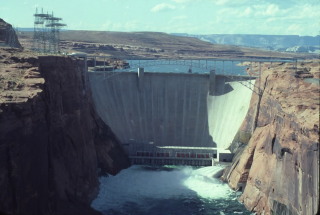
My third thesis study area was in Glen Canyon, just downstream of
the Glen Canyon Dam, pictured here. Like Zion Park, this canyon
was carved into the massive Navajo Sandstone.
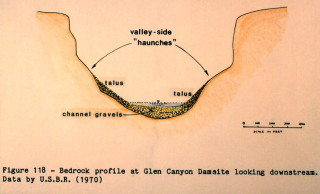
This is a geologic cross section through Glen Canyon, just downstream
of the dam. Note the prominent curvilinear “haunches”
developed in the sandstone on either bank. These
haunches were protected by a thick layer of talus.
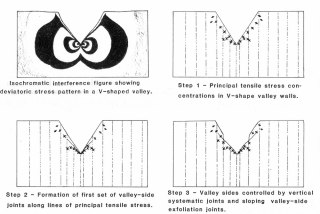
My starting point for the genesis of Glen Canyon in the Navajo Sandstone
came from a photoelastic model of a V-shaped notch in a homogeneous
media, shown ap upper left. I prepared this as one of my lab
exercises in my structural modeling course at Berkeley (CE 222).
The sequential steps were then modeled using the finite element program
JTROCK2, which allows modeling of anisotropic media with joint elements.
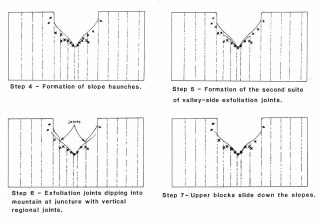
After each run with JTROCK2, I noted the areas of induced tension,
and connected these together if they exceeded the tensile strength
of the sandstone. In this manner I was able to estimate the
likely positions of secondary joints, formed in response to the canyon’s
excavation by the Colorado River.
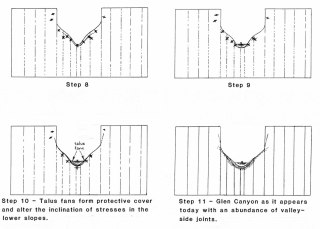
After each step, unrestrained joint-bordered blocks were removed to
simulate rock falls, and the program taken through another load iteration
with the new geometry. In the end the model closely matched the observed
conditions, with curvilinear haunches in the lower third of the canyon,
with near vertical walls above that, controlled by regional systematic
joints.
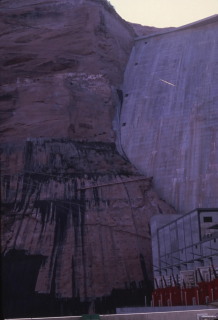
The abutments at Glen Canyon Dam had experienced some intriguing problems
with massive sheet jointing during and shortly after construction.
This view of the downstream right abutment shows three stratigraphically-controlled
seepage zones developed on the haunch. Some of the rockbolts
inserted through the sheet joints at this location subsequently failed
through hydrogen embrittlement.
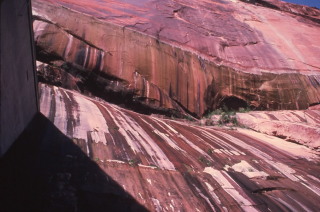
On the left downstream abutment a massive rockfall occurred a few
years after the dam was completed in mid-1964, crushing the vehicles
of a government delegation visiting the powerhouse! The failure
was classic in the sense that seepage forces percolating along inclined
sheet joints fomented the failure.
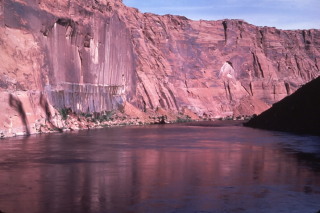
During construction of Glen Canyon Dam (1959-64) a 3-mile long valley-side
access tunnel was constructed along the left bank of Glen Canyon to
access the hydroelectric powerplant. Every 500 feet a ventilation
adit was cut to provide thermodynamic ventilation. A number
of fatalities occurred during construction, due to rockfalls at the
working face of the excavation.
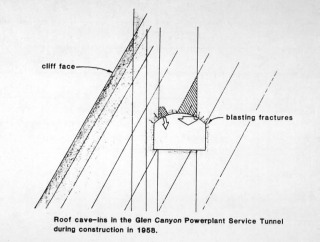
My graphic analysis of the powerplant tunnel wedge failures is sketched
here. The deadly wedges were formed by the intersection between
vertical systematic joints and inclined valley side joints, which
are also responsible for the formation of the curvilinear haunches.
Questions or comments
on this page?
E-mail Dr. J David Rogers at rogersda@mst.edu.
